Transylvania. It evokes to most of us haunted dark forests and fog-crowned mountain peaks, home to the famous Count Dracula. To two biologists eager to explore the natural wonders of Eastern Europe, the Carpathians were rather the promise of a wild forested land.
Thirsty for adventures, we decided in September 2012 to take a self-guided trekking trip in the Carpathian Mountains. The trip was organized by Europe-active, who provided us with the hiking maps and booked the pensions where we were to stay every night, each in a different village. We were soon ready to walk a little more than 100 km in seven days through two of the most famous Romanian National Parks: the Piatra Crauilui and the Bucegi National Parks.

Piatra Crauilui National Park
Our trip started in the village of Zarnesti, located a few hours by train from Bucuresti (Bucharest). After a hearty breakfast, we took our backpacks and stepped into the Piatra Crauilui National Park. The park owes its name, which translates to “King’s Rock”, to its 25 km long limestone ridge: the highest, longest and no doubt most impressive in Europe. Protected since 1938, the park covers 9,900 hectares and is a haven for wildlife. Home to wolves, lynxes, bears and chamois, more than 100 species of birds, 200 species of butterflies and 180 threatened plant species among which 40 orchids.
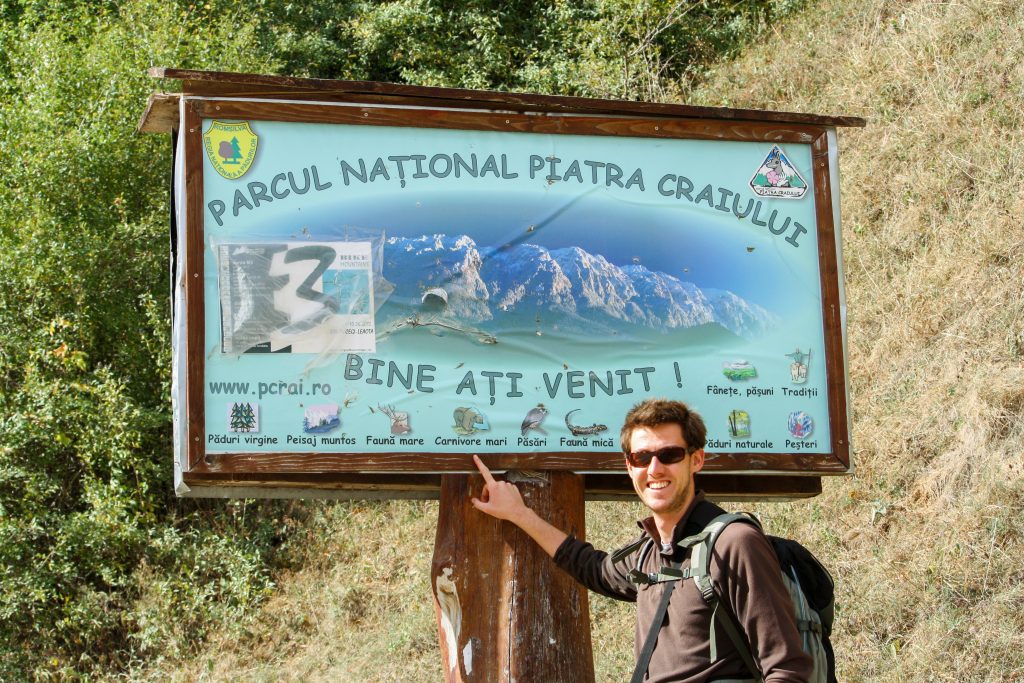
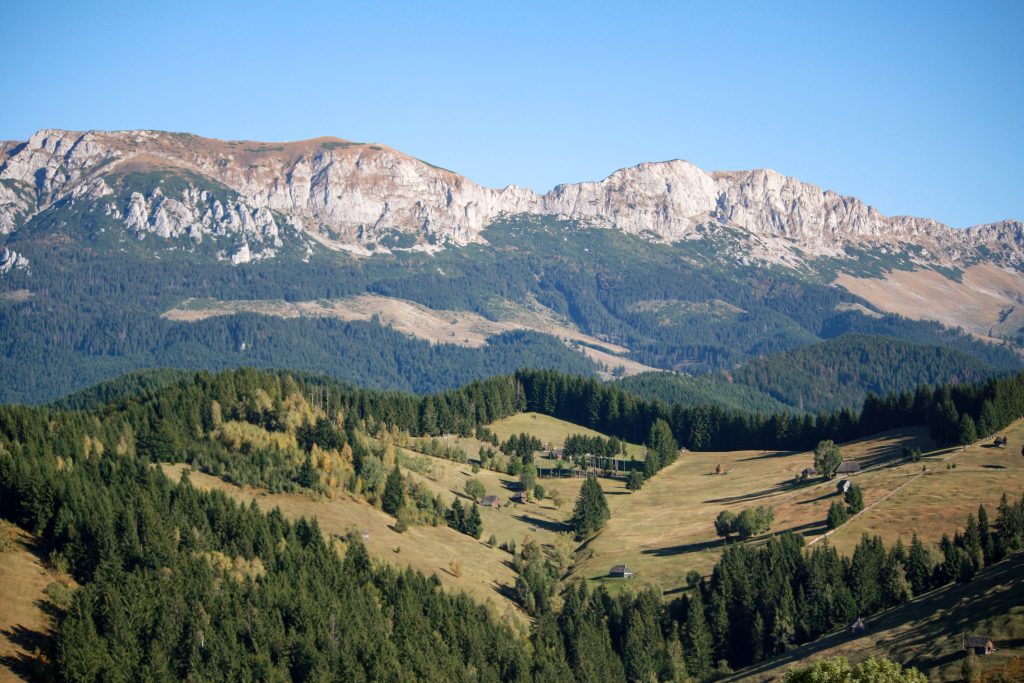
Bucegi National Park
The Bucegi National Park, located south of the Piatra Crauilui National Park, covers 32,000 hectares. The area is visited by hundreds of thousands of tourists every year, attracted by its nature, spectacular landscapes and famous rock formations. Protected since 1990, the Bucegi National Park contains 14 different nature reserves protecting an impressive flora and fauna, similar to that found in the Piatra Crauilui National Park.


The trek
Morning after morning, exhausted from climbing through dense forest, we reached the mountain peak and got to admire the breath-taking views. And every day, we were stunned by the beauty of the Carpathian wilderness. Hiking trails were very well maintained and indicated. We did get lost a few times, and one of them badly enough that our host almost launched a search party, but this was mostly due to our lack of experience. It was our first trekking holiday after all. The lesson we learned in Romania is: if you haven’t seen the trail sign you must follow for more than 10 minutes, turn back and find it.
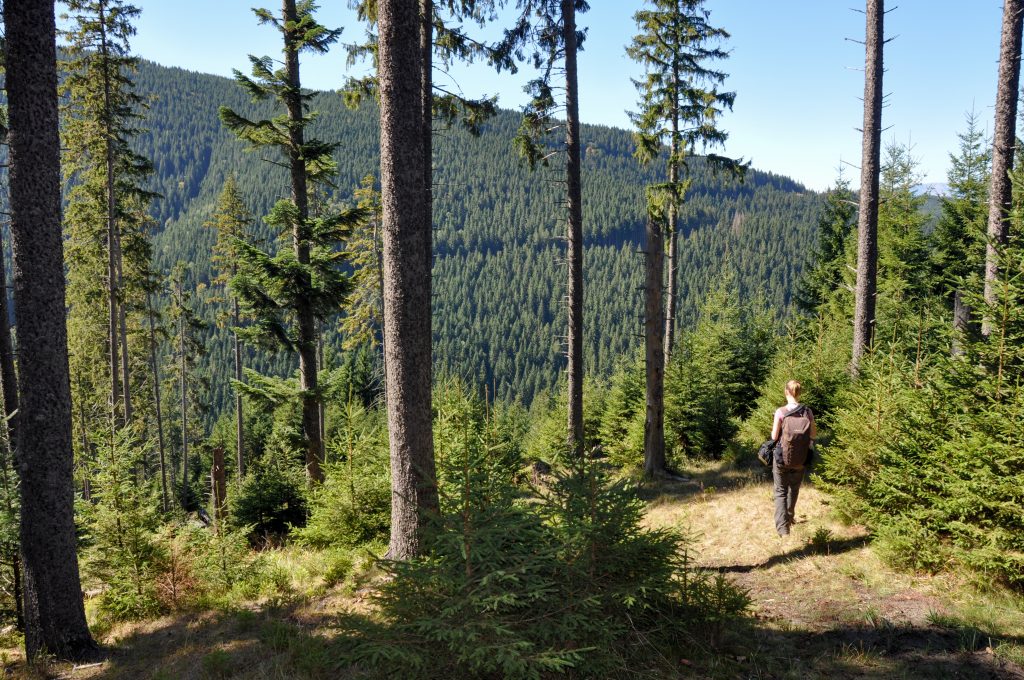
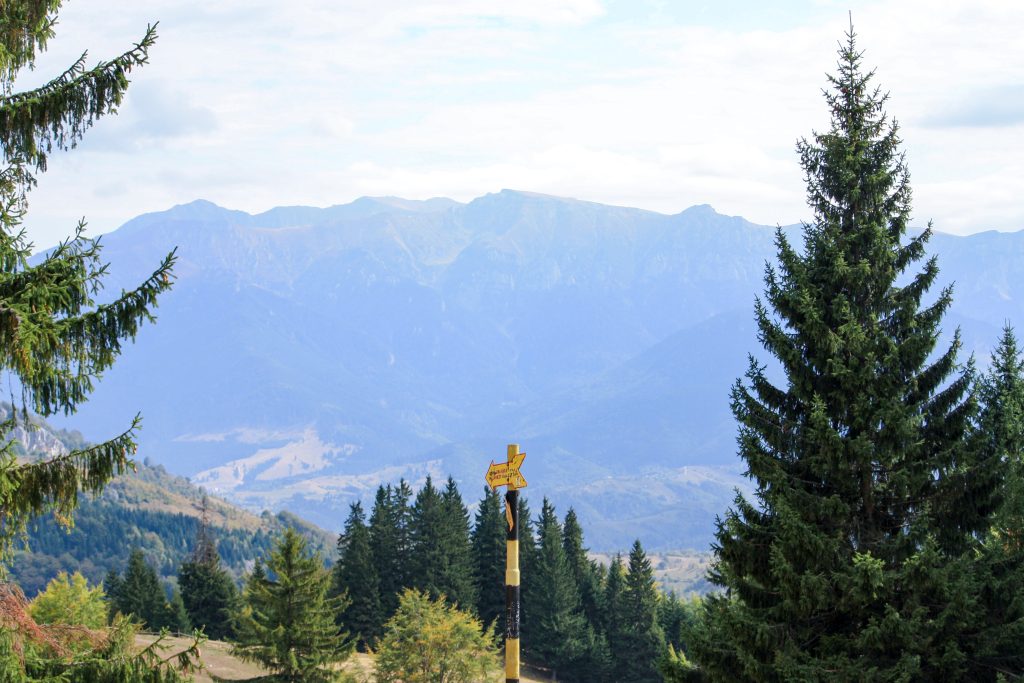
Traditional villages
As we hiked from Zarnesti to Magura, Ciocanu, Moeciu de Sus, Simon and Cojanu, we admired the bucolic panoramas of these traditional mountain Romanian villages. The rural landscape, with its meadows covered with haystacks and lined with colourful wooden houses and white churches, was no less than picturesque. Of the few villages we stayed at, Magura, with its snow-covered mountain peaks, was certainly the most beautiful of all and should not be missed.
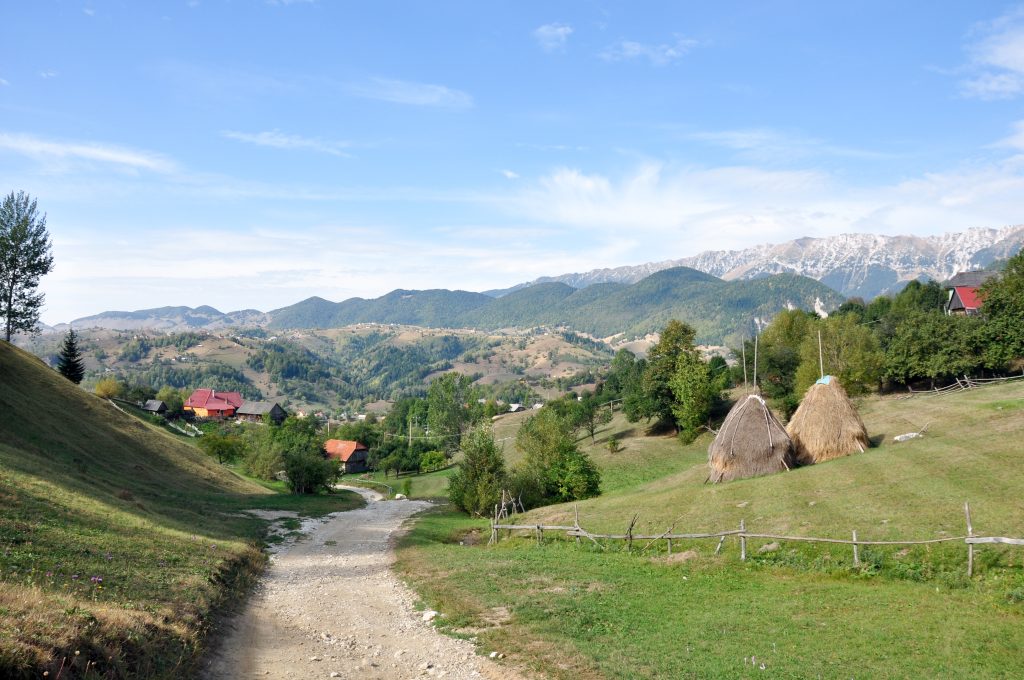

When to hike in the Carpathians
Hiking the Carpathians in September had one clear advantage: the area, usually very popular with hikers, was then almost deserted. The feeling of being alone in this splendid corner of the world was absolutely elating. However, the end of summer is not the best time of the year to observe wildlife. Besides a few birds, among which the best sightings were the Common Crossbill (Loxia curvirostra), Spotted Nutcracker (Nucifraga caryocatactes) and Common Cuckoo (Cuculus canorus), there was little wildlife to see around.
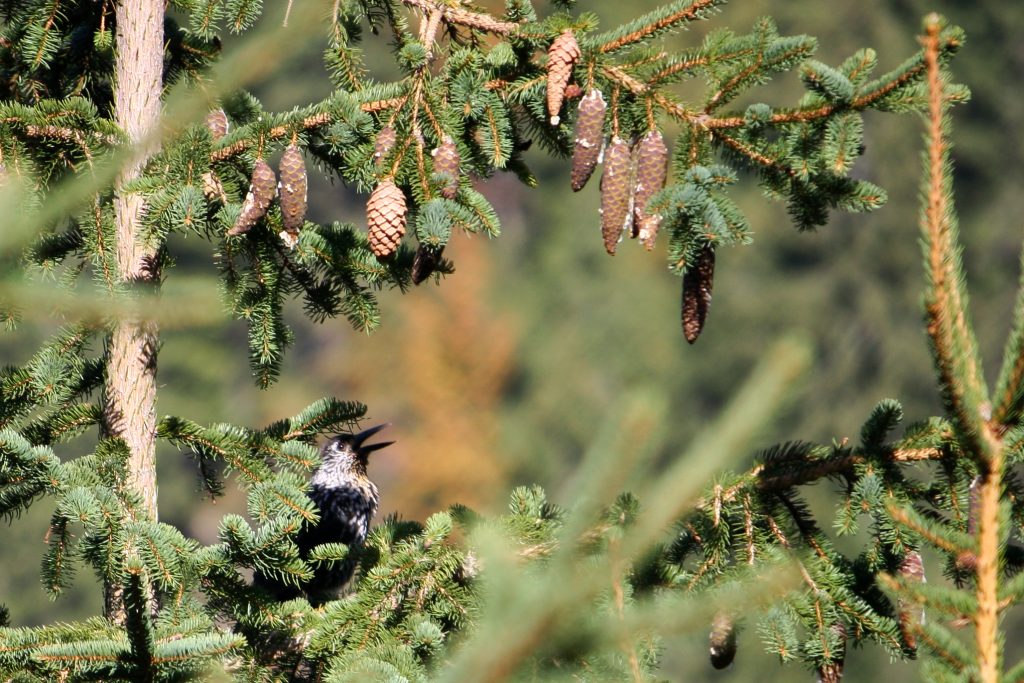

Each season has its own charm in Transylvania however, and while spring and summer are renowned for their beautiful blooms, we thoroughly enjoyed the golden fall colors all around us.

Wildlife
We were too busy walking to actively look for wildlife in the area but if you are keen to see bears, we were informed (sadly after the trip) that it is possible to book a night in a bear-watching hut via the travel agency. Alternatively, there are also opportunities to watch bears in the outskirts of the nearby city of Brasov, where they regularly scavenge on garbage.
In his famous book ‘Dracula’, Bram Stoker wrote: “We are in Transylvania and Transylvania is not England. Our ways are not your ways, and there shall be to you many strange things”. Instead of vampires and werewolves, we found in the Carpathians a magical land speckled with bucolic villages inhabited by a warm and welcoming people. This corner of Transylvania is truly an Eastern European paradise for hikers, and we recommend it to everyone looking to reconnect with nature.


